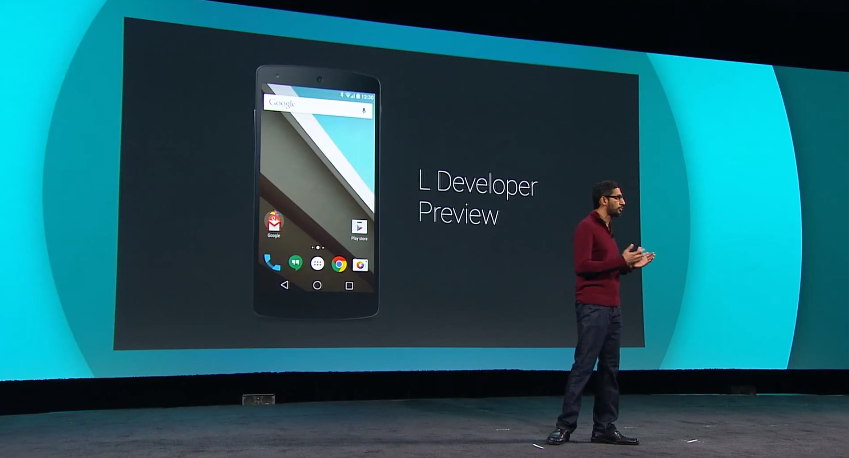
04 Jul Android L To Bring New Look And Improved Performance
Android users can expect to see a sleeker, flatter and more colourful OS with the next version of Android. Last week at the annual Google I/O Developer’s conference, Sundar Pichai introduced Google’s newest iteration of its Android OS. Dubbed Android L, the software is currently available for developers and will be available for consumers by spring 2014. Android L looks to be a significant update for the Android mobile platform. Not only has Google completely overhauled the look and feel of the OS with Material Design, but wearables are also making a big appearance with a deep integration between the Android Wear platform and Android L.
Material Design
 Described as “fresh, bold, a new look” by Pichai, Material Design is a brand new design language which will be implemented across smartphones, tablets, web, desktops and wearables.
Described as “fresh, bold, a new look” by Pichai, Material Design is a brand new design language which will be implemented across smartphones, tablets, web, desktops and wearables.
Using a flat design but including shadow gradients, Material Design allows for realistic animations and 3D tiles that slide over one another.
To incorporate a sense of aesthetic consistency to all Android apps across the different devices, developers will have access to use Material Design on their applications, ultimately reducing fragmentation.
Google has decided less is more by simplifying the soft key. A soft key is a key that can be programmed, on a phone, to perform several different functions of the user’s choosing. Google have simplified triangle for back, circle for home and a box for multitasking.

Credit: greenbot.com
Notifications
“Heads up” is a new notification style that Android L will implement.
When a user receives a notification, it will pop up at the top of the screen no matter which application a user is in, giving the user the power to respond or dismiss the notification. For a cleaner look, cluttered notifications won’t fill the lock screen as the user will have the power to control what notifications are displayed on the lock screen.
For smarter notifications, the system will work out what the user deems as important by what they look at and interact with most often.
This intelligent software approach also extends to the lockscreen. Users can set the device to unlock automatically without a PIN when they step inside a certain location or if they are wearing a certain Bluetooth device (e.g. smartwatch). If they move away or take off the Bluetooth device, the lockscreen will require a password, once again.

Credit: Phone Arena
Battery Life Improved with Project Volta
Project Volta opens up battery use to developers so they can see the effect their app has on battery life, which will contribute to applications running more effectively.
A built-in battery saver feature has also been included to optimize power consumption on Android devices.
Ars Technica’s Ron Amadeo put Project Volta to the test using the developer preview of Android L. Installing the developer preview on a Nexus 5, the results showed that Project Volta contributed 36% more battery life than when the device was running KitKat 4.4. This equated to an extra two hours of runtime.
Back-End Changes For Better Performance
G oogle have decided to abandon the Dalvik runtime environment, upgrading to ART that will allow applications to run faster and smoother.
oogle have decided to abandon the Dalvik runtime environment, upgrading to ART that will allow applications to run faster and smoother.
ART works with ARM, x86 and MIPS chips and is twice as fast as the Dalvik runtime. It has been designed to take advantage of 64-bit compatibility and best of all; developers won’t need to tweak their application to take advantage of the upgraded runtime because all apps can make use of ART right away.
Another benefit of the ART runtime, is that it is also more memory efficient than Dalvik, allowing apps running in the background to benefit from megabytes of saved data.
Android Work
Google are pushing hard to get Android into the enterprise.
The launch of Android L also included features targeted towards both end users and IT aiming to make the Android platform much more attractive for work use. The focus was on security, however, there were a few other features announced to help improve mobile device productivity for professionals. Check out our article on what Android L brings to the enterprise to learn more.

